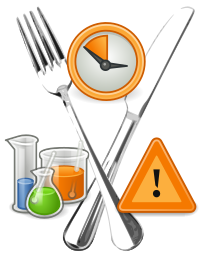
Photo from wikipedia
Current research on deoxynivalenol (DON), a trichothecene secondary metabolite produced by the Fusarium species in corn grains, relies on the time-consuming field inoculation of Fusarium species with unpredictable and low… Click to show full abstract
Current research on deoxynivalenol (DON), a trichothecene secondary metabolite produced by the Fusarium species in corn grains, relies on the time-consuming field inoculation of Fusarium species with unpredictable and low recovery rates of DON in grains. The objective of this study was to evaluate three methods: soaking whole grains, soaking cracked grains, and injection in three solvents (distilled water, methanol, and acetonitrile) at three toxin concentration levels (1, 5, and 10 µg/g) for facilitating DON absorption in corn grains. The effectiveness of each treatment method and the performance of each solvent in aiding DON absorption were analysed and compared with the recovery rates of DON in the treated corn grains. The treatment methods, solvent, and DON concentration in solvent had significant effect on the recovery rate of DON in treated kernels. Injecting whole grains showed the highest recovery rates of DON (60%–108%) followed by soaking cracked grains (10%–87%) and whole grain (10%–72%) treatment methods. Distilled water showed the highest recovery rates in both soaking (53%–87%) and injection (74%–105%) treatment methods followed by methanol (18%–68% for soaking; 66%–103% for injection) and acetonitrile (10%–36% for soaking; 61%–108% for injection). Water dispersed the arrangement of starch granules but caused no changes in their surface morphology. Methanol and acetonitrile showed disruptive effects on the surface morphology of starch granules.
Journal Title: Canadian Journal of Plant Science
Year Published: 2023
Link to full text (if available)
Share on Social Media: Sign Up to like & get
recommendations!